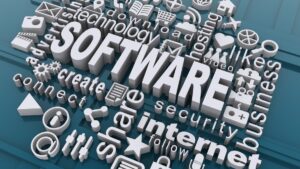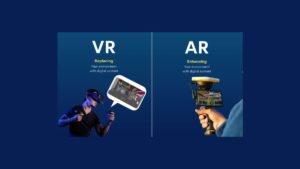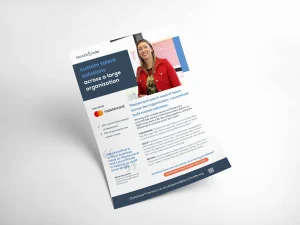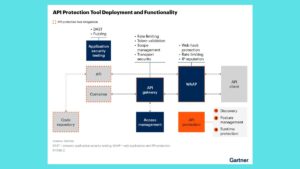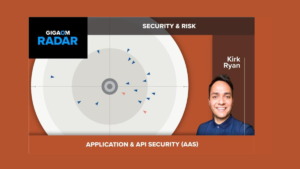Transforming HR through Agile Workforce Solutions: A New Era of Talent Management

In today’s fast-paced and ever-changing business environment, organizations are continuously seeking ways to adapt and thrive. One of the key areas transforming is human resources (HR). Traditional HR practices, which often involve rigid structures and lengthy processes, are being replaced by more flexible, responsive, and efficient approaches. Agile workforce solutions have emerged as a game-changer, allowing HR teams to better manage talent, improve employee engagement, and drive business outcomes. In this blog, we explore how agile workforce solutions are transforming HR and why they are critical for the future of work.
1. What is Agile Workforce Solutions?
Agile workforce solutions refer to the adoption of agile principles and methodologies in HR practices to create a more adaptive, responsive, and people-centric approach to managing human capital. Borrowed from software development, agile focuses on collaboration, flexibility, continuous improvement, and delivering value quickly. In the context of HR, this means moving away from static, top-down processes to more dynamic, iterative, and employee-focused strategies.
Key Characteristics of Agile Workforce Solutions:
- Flexibility and Adaptability: Quickly respond to changing business needs and workforce dynamics.
- Continuous Feedback and Improvement: Regular feedback loops to improve processes and employee experience.
- Collaboration and Empowerment: Cross-functional teams that collaborate closely and empower employees.
- Focus on Value Delivery: Align HR initiatives with business goals and deliver measurable outcomes.
2. The Need for Agile in HR
The traditional HR model, characterized by hierarchical structures and long planning cycles, often falls short in meeting the demands of today’s workforce. The modern workplace is more complex, diverse, and rapidly evolving, requiring HR to be more agile and responsive. Several factors are driving the need for agile HR solutions:
a. Rapid Technological Changes
Technological advancements are reshaping industries at an unprecedented pace. HR must leverage agile approaches to quickly adopt new technologies, streamline processes, and support a digitally savvy workforce.
b. Shifting Workforce Expectations
Today’s employees seek more than just a paycheck; they desire meaningful work, flexibility, continuous learning, and a positive work culture. Agile HR allows organizations to be more attuned to these expectations, creating a more engaging and fulfilling employee experience.
c. The Rise of Remote and Hybrid Work
The COVID-19 pandemic accelerated the shift towards remote and hybrid work models. Agile workforce solutions enable HR to manage distributed teams effectively, foster collaboration, and maintain productivity in a flexible work environment.
d. The War for Talent
The competition for top talent is fiercer than ever, with organizations vying to attract, retain, and develop skilled employees. Agile HR practices help businesses stay competitive by creating a more attractive, dynamic, and supportive work environment.
3. Key Components of Agile Workforce Solutions
Implementing agile workforce solutions involves several key components that collectively transform how HR operates:
a. Agile Talent Acquisition
Traditional recruitment processes can be lengthy and cumbersome. Agile talent acquisition focuses on speed, flexibility, and continuous improvement. This includes:
- Candidate-Centric Approach: Emphasizing the candidate experience with streamlined application processes, transparent communication, and rapid feedback.
- Data-Driven Recruitment: Leveraging data and analytics to identify the best talent sources, refine job descriptions, and make informed hiring decisions.
- Iterative Hiring Processes: Continuously refining recruitment strategies based on feedback and results, allowing HR teams to adapt quickly to changing talent needs.
b. Agile Performance Management
Conventional performance reviews often occur annually and are based on outdated metrics. Agile performance management replaces these with continuous feedback, regular check-ins, and goal alignment.
- Continuous Feedback Loops: Frequent, real-time feedback between managers and employees to foster growth and development.
- Goal Setting and Alignment: Setting short-term, achievable goals that align with organizational objectives, allowing for adjustments as priorities shift.
- Development Focus: Emphasizing employee growth and development rather than just evaluation, creating a more supportive and motivating environment.
c. Agile Learning and Development
Agile learning and development (L&D) prioritize continuous learning and adaptability, equipping employees with the skills they need to thrive in a rapidly changing environment.
- Personalized Learning Paths: Tailoring training programs to individual needs and career aspirations, ensuring relevance and engagement.
- Microlearning and On-Demand Resources: Offering bite-sized, on-demand learning modules that employees can access anytime, anywhere.
- Iterative Program Development: Continuously updating and refining L&D programs based on employee feedback and emerging skills requirements.
d. Agile Employee Engagement
Agile HR places a strong emphasis on employee engagement, creating a culture that values collaboration, recognition, and inclusion.
- Regular Pulse Surveys: Conducting frequent, short surveys to gauge employee sentiment and identify areas for improvement.
- Cross-Functional Teams: Encouraging collaboration across departments, breaking down silos, and fostering a sense of community.
- Recognition and Rewards: Implementing dynamic recognition programs that celebrate achievements and reinforce positive behaviors.
4. Benefits of Agile Workforce Solutions
Adopting agile workforce solutions offers numerous benefits for organizations, employees, and HR teams alike:
a. Enhanced Responsiveness
Agile HR allows organizations to respond quickly to changes in the business environment, such as market shifts, technological advancements, or new regulatory requirements. This adaptability is critical for staying competitive and resilient.
b. Improved Employee Experience
Agile practices prioritize the needs and preferences of employees, leading to higher engagement, satisfaction, and retention. A positive employee experience is closely linked to productivity and overall business performance.
c. Greater Alignment with Business Goals
Agile HR ensures that talent strategies are closely aligned with organizational objectives, driving better outcomes and supporting business growth. By focusing on value delivery, HR can demonstrate its impact on the bottom line.
d. Increased Efficiency and Cost Savings
By streamlining processes, reducing bureaucracy, and eliminating waste, agile workforce solutions enhance HR efficiency and reduce operational costs. This allows HR teams to focus on strategic initiatives rather than administrative tasks.
e. Empowered and Engaged Teams
Agile HR fosters a culture of empowerment, where employees are encouraged to take ownership of their work and contribute to the organization’s success. This leads to more engaged, motivated, and high-performing teams.
5. Challenges and Considerations in Implementing Agile HR
While agile workforce solutions offer significant benefits, implementing them is not without challenges:
a. Cultural Shift
Agile HR requires a shift in mindset from both HR professionals and the wider organization. This cultural transformation can be difficult, especially in companies with established, hierarchical structures.
b. Change Management
Successfully implementing agile HR practices involves managing change effectively. This includes clear communication, training, and support to help employees and leaders embrace new ways of working.
c. Balancing Flexibility with Structure
While agility emphasizes flexibility, it’s important to maintain a level of structure and consistency in HR processes. Striking the right balance is key to ensuring that agile practices are effective and sustainable.
d. Measuring Success
Traditional HR metrics may not fully capture the impact of agile workforce solutions. Organizations need to develop new KPIs that reflect the agility, responsiveness, and employee-centric nature of agile HR.
6. The Future of Agile Workforce Solutions in HR
The adoption of agile workforce solutions is poised to accelerate as organizations recognize the need for more adaptive and resilient HR practices. Looking ahead, we can expect several trends to shape the future of agile HR:
a. Integration of Technology and AI
Technology, including artificial intelligence (AI) and machine learning, will play a crucial role in enhancing agile HR solutions. From AI-driven recruitment tools to predictive analytics for employee engagement, technology will enable HR teams to make data-driven decisions and automate routine tasks.
b. Increased Focus on Employee Wellbeing
Agile HR will continue to place a strong emphasis on employee wellbeing, including mental health, work-life balance, and holistic development. This focus is essential for creating a supportive and sustainable work environment.
c. Expanding Agile Practices Beyond HR
As agile practices prove their value in HR, organizations may extend these principles to other areas, such as operations, marketing, and customer service, creating a more agile and cohesive organization overall.
d. Evolving Role of HR as Strategic Partner
Agile HR elevates the role of HR from administrative support to a strategic partner that directly contributes to business success. This evolution will require HR professionals to develop new skills and capabilities, including agile project management, data analytics, and change leadership.
Conclusion: Embracing Agile Workforce Solutions for a Dynamic Future
Agile workforce solutions represent a transformative approach to HR, one that aligns with the demands of the modern workforce and the dynamic nature of today’s business landscape. By embracing agile principles, HR teams can enhance their responsiveness, improve employee engagement, and deliver greater value to the organization.
As we navigate the future of work, the ability to adapt, innovate, and put people at the center of HR practices will be crucial. Agile workforce solutions provide the framework for achieving these goals, empowering organizations to not only survive but thrive in an ever-evolving world. Whether it’s attracting top talent, fostering a culture of continuous improvement, or aligning HR strategies with business objectives, agile HR is the key to unlocking the full potential of your workforce.


